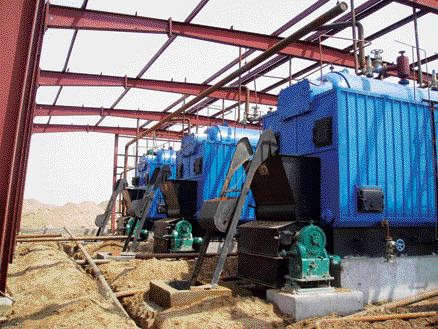Vancouver — Mine development is rapidly advancing at Jinshan Gold Mines’ (JIN-V, JINFF-O) Chang Shan Hao (217) gold deposit, in the northern Chinese region of Inner Mongolia, following completion of a final feasibility study indicating positive economics for an open-pit heap-leach operation.
The independent engineering review proposes a mine producing about 117,000 oz. gold annually over an initial 9-year mine life with cash costs of US$253 per oz. Chang Shan Hao (217) will come on-stream with relatively low initial capital spending of US$32 million and is expected to generate a pretax internal rate of return (IRR) of 32% with net present value (NPV), discounted at 5%, of US$71 million using a US$425-per-oz. gold price. At US$600-per-oz. gold, project economics are much rosier with an 87% IRR and US$212-million NPV.
Chang Shan Hao (217) is a large-tonnage, low-grade deposit located in the central Tianshan gold belt. It contains a 110.1-million-tonne measured and indicated resource grading 0.83 gram gold per tonne (about 2.92 million contained ounces) using a 0.5-gram gold cutoff grade. Additional inferred resources of 18.3 million tonnes averaging 0.78 gram gold were also tabled, containing about 460,000 oz. gold.
To match the capacity in the current mine permit application, the feasibility study modelled an open pit using just 78 million tonnes of the measured and indicated resource at 0.81 gram gold in the Northeast zone. Jinshan expects future drilling and mine optimization of the Southwest and Central zones will boost the mining rate and life of the operation, assuming the company also receives a permit to increase the mining pace.
The Northeast zone was estimated to host proven and probable open-pit reserves of 66.7 million tonnes grading 0.75 gram gold for about 1.2 million oz. recoverable gold. The modelled pit will boast a lean waste-to-ore strip ratio of 1.07:1.
Jinshan has been jumping through the Chinese permitting hoops for its mine, with approvals in hand for the reserve and resource reports, and for its environmental impact assessment. The company feels approval of its mining application could come in the third quarter, and is hoping to start commercial gold production in the fourth quarter. Initial mining would likely be at a limited scale due to the region’s winter conditions, reaching full capacity by spring 2007.
The operation is expected to process about 20,000 tonnes per day. In the first two years, near-surface weathered ore will be mined and stacked on the heap-leach pads as run-of-mine material. A 3-stage crushing plant will be built in the second year to begin processing the deeper sulphide ore in year three.
Financing
On the finance front, earlier this year Jinshan lined up Macquarie Bank as lead arranger for a US$35-million loan for mine development and working capital.
Jinshan, meaning Gold Mountain in Chinese, first acquired option rights to the project in April 2002 to earn a 96.5% interest from the Brigade 217 of the Northwest Geological Bureau, China National Nuclear Co. It is now fully vested — apart from two payments totalling US$2 million, due when project construction, and then commercial operations begin.
The aspiring gold producer consolidated ownership of the project in late 2005, acquiring Ivanhoe Mines’ (IVN-T, IVN-N) 50% participating interest for 48.55 million Jinshan shares, making Ivanhoe a majority controlling shareholder with about a 53% stake.
The deposit is hosted within a package of sheared Proterozoic to Mesozoic sediments that have undergone extensive structural preparation, in the form of fracturing and faulting, and folding. Two Paleozoic granitic intrusives, to the north and south, are believed to be associated with mineralization. Gold is generally fine-grained, occurring within thin quartz-sulphide seams and stringers along bedding plane shears.
More than 25,000 metres of drilling have outlined the three principal mineralized zones at Chang Shan Hao (217): the Northeast, Southwest and Central.
In 2004, Jinshan began an open-pit pilot-mining plan, extracting about 100,000 tonnes of oxide gold mineralized material for heap-leach and bulk-tonnage trial processing. The pilot plant comprised a 1,000-tonne-per-day crusher and conveyor system that delivered ore to two 50,000-tonne leach pads. Trial leaching was designed to test both run-of-mine and single-stage crushed ore. A 300-metre decline was constructed to access deeper sulphide mineralization for testing. Success came in the form of a gold pour of about 580 oz., coupled with data on the metallurgy and recovery characteristics of the ore.
Chang Shan Hao (217) benefits from good access to regional infrastructure with the major industrial city of Baotou, located just 200 km south, along a paved highway. Ivanhoe’s massive Oyu Tolgoi copper-gold project is situated not far north, across the Mongolian border.
With its flagship Chang Shan Hao (217) project about to enter production, Jinshan has added a number of additional Chinese exploration projects to its portfolio. The most advanced of these is its Dadiangou gold property in central China’s Gansu province, with other projects located in the eastern Tianshan mineral belt of Xinjiang province in the country’s northeast.
The company is awaiting a business licence for Dadiangou where it will earn a minimum 80% interest and plans a 5,000-metre drill program expected to lead to a resource estimate. The project hosts gold mineralization associated with a multiple shear zone system. Sampling in a number of underground adits and crosscuts in addition to surface work has identified a potential bulk tonnage mineralized zone with average grades in the order of 1.5 grams gold.
At its recent trading level around $1.26 per share, the company posts a $163-million market capitalization based on its 129.6 million shares outstanding. Jinshan’s latest financials show working capital of about US$11 million. Its stock has a 52-week trading range of 46-$1.60.


Be the first to comment on "Jinshan Gold aims for year-end startup"